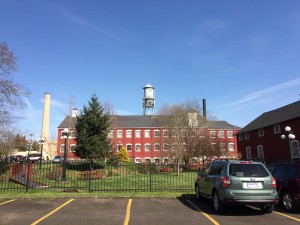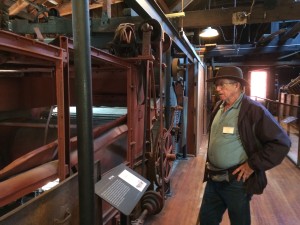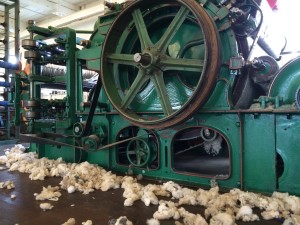I was able to spend almost 3 hours today at the other two mills on my list – Thomson Mill and Kay Woolen mill
I was able to take a private tour at both (mostly because I was the only one there at tour start time). Both sites have absolutely fantastic tours and I took about 130 photos and videos. I won’t try and upload all of that with my Best Western hotel WiFi – below are a few select photos from both.
(edit – I just previewed this and the photos just don’t do either of these places justice but the videos are more evocative – hopefully I will be able to upload them soon – Nick)
The Thomson Mill was built and operating approximately a year ahead of Oregon becoming a state. When the property was purchased, the land cost was $50 dollars and the water rights were $75. This turned out to be important as the mill maintained the oldest and therefore most senior water rights on the river near Shedd Oregon – and the river sometimes would run dry in the summer. The state bought the mill a few years ago to partly secure the water rights and make more productive usage (restoring steelhead and chinook spawning grounds due to demolition of various dam structures and also providing agriculture more water in dry years). The steelhead and the chinook population has gone up 10x since 2004.
The mill itself was an absolute work of practical genius – packing in as much customization as was possible for different types of grain grinding, types of grinding etc… The 3 water turbines powered a 4 story rube goldberg of chutes, pipes with internal augers for transport of grain and belts. I would estimate over 100 different chutes where available to route grain around the building. Fascinating place finally over come by the giant agriculture firms
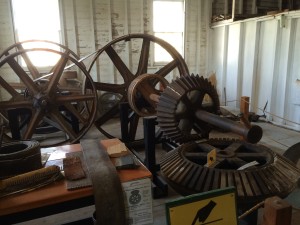
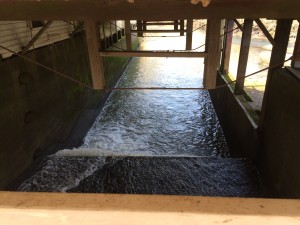
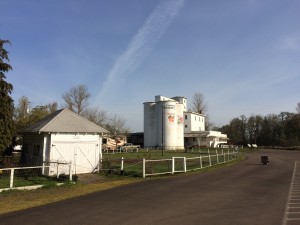
Kay Woolen mills was also a great place – their turbine system was very powerful and generated enough oomph to power all the mill machinery AND 200 watts of electricity to power the 100 lightbulbs (20 watts) throughout the mill. Built slightly later than Thomson (i will have to look up the date latter), mill we can visit today is the second mill – the first one burnt down 7 years after originally being built.
The mill employed 1/5 of the people around Salem OR and a giant majority of the non-farm population. The mill owners were very family oriented – all the children worked in the mill and knew how to do every job. A bit of a dispute with the family caused a portion of the family to branch off and take over a defunct mill in Pendleton OR – the famous Pendleton Mills which is still going strong (they had french looms which could take the smaller fibers needed for weaving synthetics in the late 1950’s and early 1960’s) http://www.pendleton-usa.com/
I noticed a lot of the machinery at Kay was manufactured in Massachusetts – the mill tour guide was very interested to find out that I was from a town near Lowell MA – he was an old mill mechanic and had vacationed in MA to visit the old mills in Lowell.
The mill itself was very much more purpose built and designed for high volumes of a more narrow product set than the Thomson mill – so it was much more structured. Fascinating stuff – during the demonstration of one of the power looms, it wove about 1/2 an inch in 20 seconds and apparently that is slow – more modern mills would do about 4x of that. The shuttle that zooms back and forth apparently on this loom took the trip 3 times per second – originally the shuttle was walnut – the one they were using for the demo was a vintage Bakelite model
Great stuff – I will link and post up more when I have the opportunity.
Oh – and where am I now? I am in La Grande OR on Interstate 84 going east – so getting near the Idaho border. I tried to stay in Pendelton OR – but there was some giant school state basketball championship going on and all the hotels were booked – i had to drive another 45 miles further (but I got smart and booked a room on the phone at that point since there was a stream of other travellers looking for rooms!)
